Frost Protection - UTL Repository
Frost Protection - UTL Repository
Frost Protection - UTL Repository
You also want an ePaper? Increase the reach of your titles
YUMPU automatically turns print PDFs into web optimized ePapers that Google loves.
CHAPTER<br />
3<br />
MECHANISMS OF<br />
ENERGY TRANSFER<br />
MASS AND ENERGY IN THE AIR<br />
To know the concepts of frost protection, it is important to have a good<br />
description of the constituents of air and their relationship to energy content.<br />
Numerically, nitrogen (N 2 ) and oxygen (O 2 ) molecules are the main<br />
constituents of the atmosphere, with water vapour (H 2 0) being a minor (and<br />
variable) component. Within a cubic metre of air there are more gas molecules<br />
than stars in the universe (about 2.69×10 25 ), but the volume occupied by the<br />
molecules is less than about 0.1 percent of the total volume of the air<br />
(Horstmeyer, 2001). Therefore, while the number of air molecules within a<br />
cubic metre of atmosphere is immense, the Earth’s atmosphere is mostly empty<br />
space. However, the molecules are moving at high velocity, so there is<br />
considerable kinetic energy (i.e. sensible heat) in the air. In this chapter, the<br />
methods of energy transfer that control sensible heat content and hence air<br />
temperature are discussed.<br />
Energy transfer rates determine how cold it will get and the effectiveness of<br />
frost protection methods. The four main forms of energy transfer that are<br />
important in frost protection are radiation; conduction (or soil heat flux);<br />
convection (i.e. fluid transfer of sensible and latent heat properties) and phase<br />
changes associated with water (Figure 3.1).<br />
Radiation is energy that comes from oscillating magnetic and electric fields<br />
and, unlike the other transfer mechanisms, can transfer through empty space.<br />
Good examples are the energy one feels from sunlight or from standing near a<br />
fire. Radiation that is intercepted by a surface is commonly expressed in terms of<br />
energy per unit time per unit surface area (e.g. W m -2 ). In frost protection, the<br />
net radiation (R n ) is an important factor. The components that determine R n ,<br />
including short-wave (solar) radiation downward (R Sd ) and upward (R Su ), and<br />
long-wave radiation downward (R Ld ) and upward (R Lu ), are discussed later in<br />
this chapter.<br />
Conduction is heat transfer through a solid medium, such as heat moving<br />
through a metal rod (Figure 3.1) or through the soil. Technically, soil heat can be<br />
measured with a thermometer, so it is sensible heat, but it moves mainly by<br />
conduction (i.e. from molecule to molecule) through the soil. When energy<br />
41


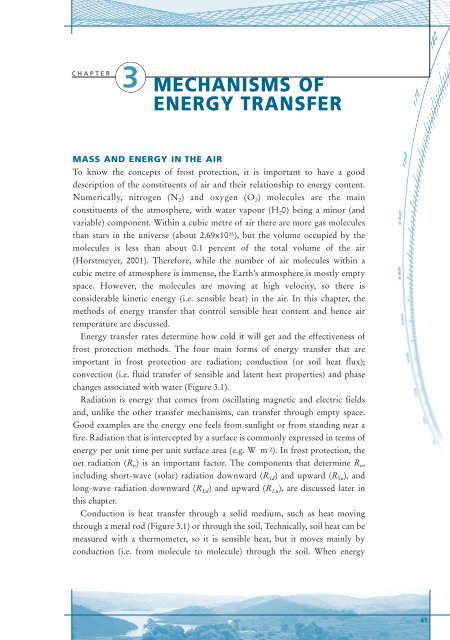
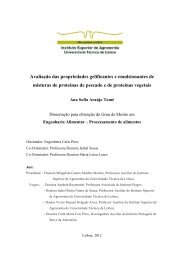
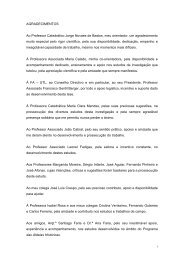
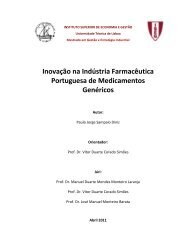
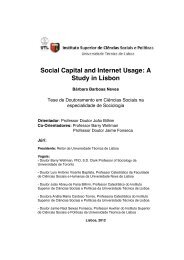
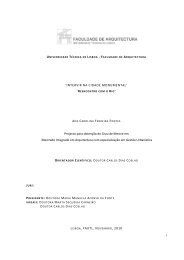
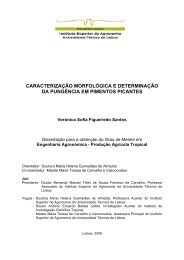

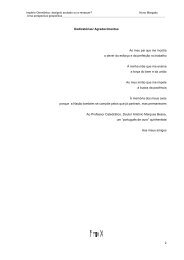
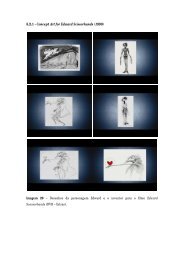
![Tese - Es..[1].pdf - UTL Repository - Universidade Técnica de Lisboa](https://img.yumpu.com/25707135/1/184x260/tese-es1pdf-utl-repository-universidade-taccnica-de-lisboa.jpg?quality=85)


